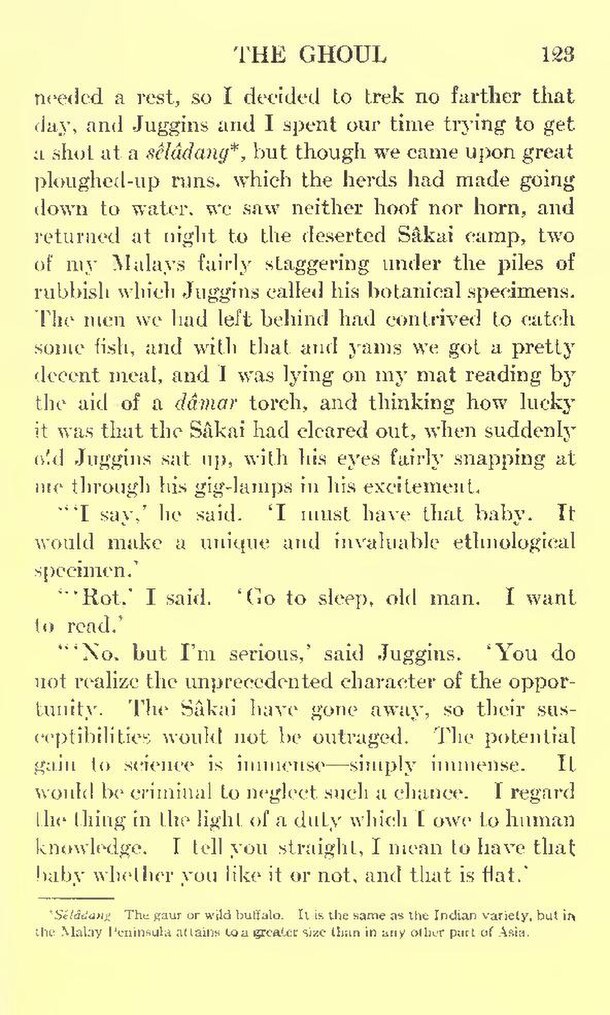needed a rest, so I decided to trek no farther that day, and Juggins and I spent our time trying to get a shot at a sêlâdang[1], but though we came upon great ploughed-up runs. which the herds had made going down to water, we saw neither hoof nor horn, and returned at night to the deserted Sâkai camp, two of my Malays fairly staggering under the piles of rubbish which Juggins called his botanical specimens. The men we had left behind had contrived to catch some fish, and with that and yams we got a pretty decent meal, and I was lying on my mat reading by the aid of a dâmar torch, and thinking how lucky it was that the Sâkai had cleared out, when suddenly old Juggins sat up, with his eyes fairly snapping at me through his gig-lamps in his excitement.
"'I say,' he said. 'I must have that baby. It would make a unique and invaluable ethnological specimen.'
"'Rot.' I said. 'Go to sleep, old man. I want to read.'
"'No, but I'm serious,' said Juggins. 'You do not realize the unprecedented character of the opportunity. The Sâkai have gone away, so their susceptibilities would not be outraged. The potential gain to science is immense—simply immense. It would be criminal to neglect such a chance. I regard the thing in the light of a duly which I owe to human knowledge. I tell you straight, I mean to have that baby whether you like it or not, and that is that.
- ↑ Sêlâdang The gaur or wild buffalo. It is the same as the Indian variety, but in the Malay Peninsula attains to a greater size than in any other part of Asia.
